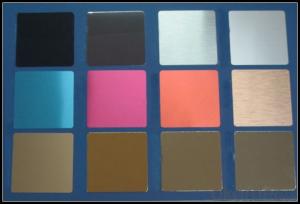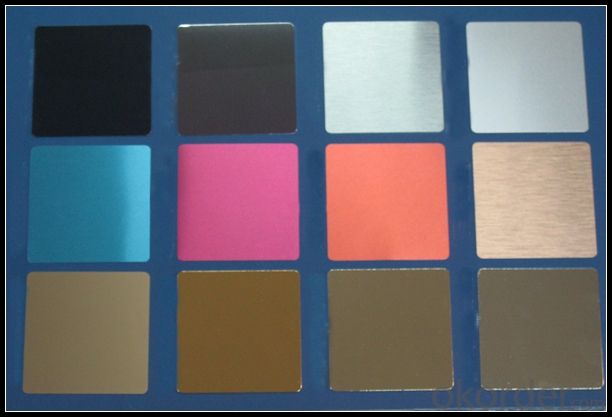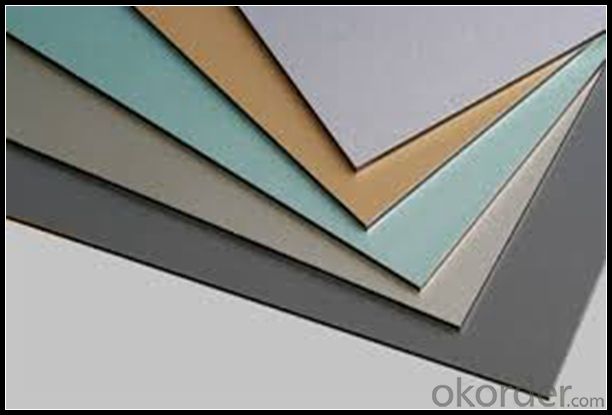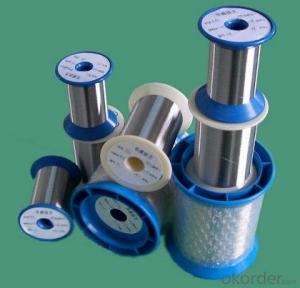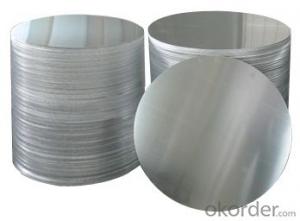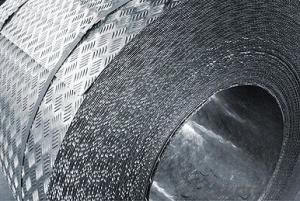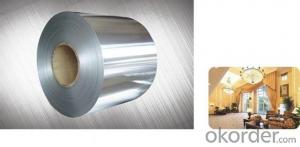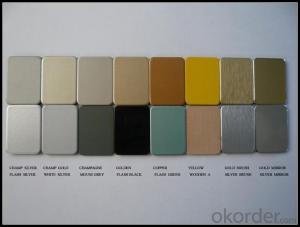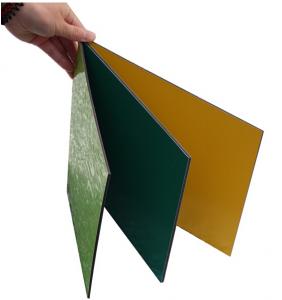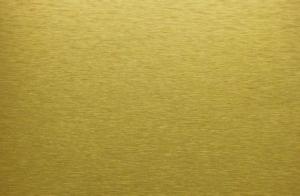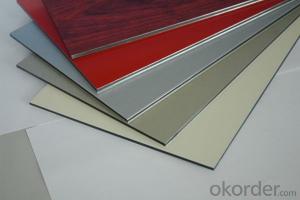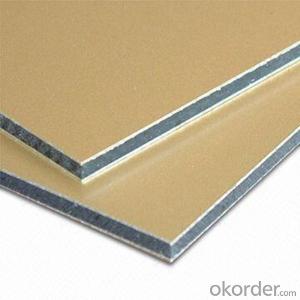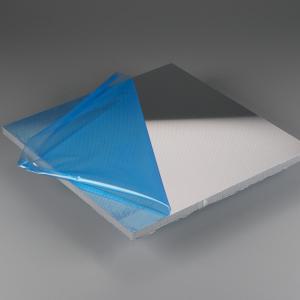Composite Aluminum Sheets - PVDF Color Coating Aluminum Sheet for Building Curtain Walls
- Loading Port:
- Shanghai
- Payment Terms:
- TT OR LC
- Min Order Qty:
- 5 m.t.
- Supply Capability:
- 10000 m.t./month
OKorder Service Pledge
OKorder Financial Service
You Might Also Like
Specification
1. Specification of PVDF Color Coating Aluminium Sheet for Building Curtain Walls
ALLOY | AA1050 AA1060 AA1070 AA1100 ETC AA3003 AA3004 AA3005 AA3104 AA3105 ETC AA5005 AA5052 AA5083 AA5754 ETC AA8011 AA8006 AA8079 ETC |
TEMPER | H14,H16,H18,H22,H24,H26,H32,O/F |
THICKNESS | 0.03MM-3.0MM |
WIDTH | 30mm-1700mm |
COIL WGT | 2Mt - 3Mt |
COIL ID | φ508mm,φ610mm |
SURFACE | PE ,PVDF , EPOXY,16-25MICRON PAINTING THICK, MAX 40MICRONS |
STANDARD | GB/T 17748-1999 |
2. Application of PVDF Color Coating Aluminium Sheet for Building Curtain Walls
(1).Interior: wall cladding, ceilings, bathrooms, kitchens and balconies, shutters, doors...
(2).Exterior: wall cladding, facades, roofing, canopies, tunnels,column covers , renovations...
(3).Advertisement: display platforms, signboards, fascia, shop fronts...
3. Feature of PVDF Color Coating Aluminium Sheet for Building Curtain Walls
Surfact Quality :
Be free from Oil Stain, Dent, Inclusion, Scratches, Stain, Oxide Dicoloration, Breaks, Corrosion, Roll Marks, Dirt Streaks and other defect which will interfere with use,
Mechenical Property:
Chemical Composite and Mechanical Property
4. Certificate:
SGS and ROHS(if client request, paid by client), MTC(plant provided), Certificate of Origin(FORM A, FORM E, CO), Bureau Veritas and SGS (if client request, paid by client), CIQS certificate
5. Image of PVDF Color Coating Aluminium Sheet for Building Curtain Walls


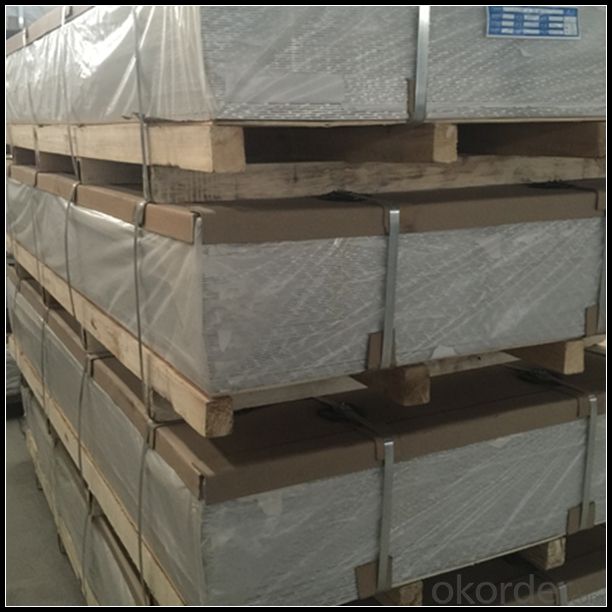
6. Package and shipping of PVDF Color Coating Aluminium Sheet for Building Curtain Walls
First, plastic cloth with drying agent inside; Second, Pearl Wool ; Third, wooden cases with dry agent , fumigation wooden pallets, aluminum surface could cover blue PVC film
7. FAQ
1) What is the delivery time?
Dpends on actual order, around 20 to 35 days
2)What is the QC system:
We have QC staff of 20 persons and advanced equipment, each production is with MTC traced from Aluminum ingot lot.
3) What market do you mainly sell to?
Australia, America, Asia, Middle East, Western Europe, Africa etc
- Q: 5083 what is the density of the aluminum plate?
- 5083 aluminum alloy is Al-Mg-Si, use a wide range, especially in the construction industry cannot do without this alloy, alloy is the most promising. The main alloying elements as magnesium, has good forming performance, corrosion resistance, weldability, moderate intensity, is a kind of pure aluminum alloy aluminum density: 2.71 tons. / m3 (g / cm3) alloy aluminum density: 2.8 tons / m3 (g / cm3) antirust aluminum density: 2.73 tons / m3 (g / cm3)
- Q: Is it possible to use aluminum sheets as a material for exterior siding or cladding on buildings?
- <p>Yes, aluminum sheets are commonly used for siding or cladding due to their durability, lightweight, and resistance to corrosion. They are low maintenance, can be easily shaped, and come in various colors and finishes. Aluminum's resistance to weathering and its ability to withstand temperature extremes make it a popular choice for both residential and commercial buildings.</p>
- Q: which kind of enterprises are aluminium sheet circles used in?
- user use cold squezz method to transform the aluminum sheet circle into various standard capacitor shell, aluminium collapsible tube shell, which are broadly used in electron industry, daily chemical industry, medicine, education and automobile products,electrical appliance, heat preservation, machine manufacturing, automobile,spaceflight,military industry,mould, construction, printing and other industries.
- Q: Can aluminum sheets be used for interior design purposes?
- Certainly, aluminum sheets are a great option for interior design purposes. The versatility of aluminum as a material offers numerous advantages when it comes to interior design applications. Its lightweight nature, durability, and resistance to corrosion make it an excellent choice for various design elements like wall coverings, ceiling panels, backsplashes, and room dividers. Aluminum sheets can be easily tailored and shaped into different forms, sizes, and finishes, providing limitless design possibilities. Moreover, aluminum is an environmentally-friendly material as it can be highly recycled. Its sleek and contemporary appearance adds a modern touch to any interior design project. In summary, aluminum sheets have gained popularity among interior designers due to their practicality, visual appeal, and sustainable nature.
- Q: has aluminum sheet reacted with concentrated sulfuric acid?
- it can be regarded as no reaction, concentrated sulfuric acid will make aluminum's surface inactivation,and produce a layer of dense aluminium oxide film which will prevent further reaction.
- Q: What are the different types of surface treatments available for marine-grade aluminum sheets?
- There is a variety of surface treatments available for marine-grade aluminum sheets, each with unique benefits and characteristics suitable for different applications. 1. Anodizing: By electrolysis, a protective oxide layer is created on the aluminum sheet's surface. Anodized aluminum sheets provide excellent resistance to corrosion, increased durability, and can be colored or dyed for aesthetic enhancement. 2. Powder Coating: Dry powder is applied to the aluminum sheet and then cured through heat, resulting in a tough and durable coating. Powder-coated aluminum sheets offer exceptional resistance to corrosion, abrasion, and fading, and come in a wide range of colors. 3. Polishing: Imperfections on the aluminum sheet's surface are removed through polishing, resulting in a smooth and shiny finish. This treatment is commonly used for decorative purposes to enhance the visual appeal of marine-grade aluminum sheets. 4. Brushing: Abrasive pads or brushes are used to create a textured surface on the aluminum sheet. Brushing is often employed to conceal scratches or imperfections and can provide a unique aesthetic appearance. 5. Chemical Conversion Coating: A chemical solution is applied to the aluminum sheet, reacting with the surface to form a protective coating. Chemical conversion coatings enhance the aluminum's corrosion resistance and can also serve as a base for further surface treatments, such as painting. 6. Clear Coating: A transparent protective layer is applied to the aluminum sheet. Clear coating helps prevent corrosion and oxidation while maintaining the natural appearance of the aluminum surface. When selecting a surface treatment, it is crucial to consider the specific requirements and intended use of the marine-grade aluminum sheets. Each treatment offers different characteristics in terms of corrosion resistance, durability, aesthetics, and cost, allowing for customization based on the application's specific needs.
- Q: How are aluminum sheets measured and specified?
- When it comes to aluminum sheets, their thickness, width, and length are typically used for measurement and specification. The gauge, which is the thickness of the sheet, is commonly measured in inches or millimeters. The width and length, also measured in inches or millimeters, are also specified. To determine the thickness of an aluminum sheet, a gauge is utilized. This gauge serves as a standardized tool for measuring the sheet's thickness. The lower the gauge number, the thicker the sheet. For instance, a 10-gauge aluminum sheet is thicker compared to a 16-gauge sheet. In terms of the width and length of an aluminum sheet, they are usually measured in inches or millimeters. The width pertains to the horizontal measurement of the sheet, while the length refers to the vertical measurement. These dimensions play a crucial role in determining the size of the sheet and its suitability for specific applications. Aside from the gauge, width, and length, aluminum sheets can also be specified based on their alloy composition or temper. The alloy composition indicates the specific combination of metals present in the sheet, such as aluminum-magnesium, aluminum-zinc, or aluminum-copper alloys. The temper, on the other hand, refers to the heat treatment process that the sheet has undergone, which affects its mechanical properties, including hardness and flexibility. In conclusion, the measurement and specification of aluminum sheets primarily involve their thickness (gauge), width, and length. These measurements, along with additional specifications like alloy composition and temper, are essential in ensuring the appropriate selection and use of aluminum sheets for various applications in industries such as construction, automotive, aerospace, and more.
- Q: Can the aluminum sheets be used for manufacturing aircraft landing gears?
- Indeed, the utilization of aluminum sheets is viable for the production of aircraft landing gears. Aluminum stands as a widely chosen substance within the aerospace field due to its beneficial attributes, namely its lightweight yet robust composition, exceptional resistance against corrosion, and commendable fatigue performance. These characteristics render aluminum sheets apt for the manufacturing of diverse aircraft components, including landing gears. The integration of aluminum into landing gears plays a pivotal role in diminishing the overall weight of the aircraft, a crucial aspect for optimizing fuel efficiency and overall performance. Moreover, aluminum boasts the capability to be effortlessly shaped, welded, and machined, thereby facilitating the creation of intricate forms and designs indispensable for landing gears.
- Q: Are aluminum sheets suitable for architectural roofing?
- Indeed, architectural roofing can indeed be accomplished with aluminum sheets. Aluminum, being a lightweight substance, is resistant to corrosion, which renders it an optimal selection for roofing purposes. Moreover, it is highly durable and capable of withstanding severe weather conditions, such as extreme temperatures, UV radiation, and strong winds. To add to its appeal, aluminum sheets are accessible in various colors and finishes, granting flexibility in terms of design and aesthetics. Furthermore, aluminum proves to be an environmentally friendly and sustainable material as it can be recycled perpetually without compromising its properties. In summary, aluminum sheets exhibit outstanding performance and versatility, thus making them a favored option for architectural roofing.
- Q: What is the density of the 1100 aluminum plate?
- 1100 aluminum density is fand 2.7g/cm.1100 for industrial pure aluminum, aluminum content (mass fraction) of 99%, can not be enhanced by heat treatment. With high corrosion resistance, electrical conductivity and thermal conductivity, and its small density, good plasticity, through pressure processing can produce all kinds of aluminum, but the strength is low.
Send your message to us
Composite Aluminum Sheets - PVDF Color Coating Aluminum Sheet for Building Curtain Walls
- Loading Port:
- Shanghai
- Payment Terms:
- TT OR LC
- Min Order Qty:
- 5 m.t.
- Supply Capability:
- 10000 m.t./month
OKorder Service Pledge
OKorder Financial Service
Similar products
Hot products
Hot Searches
Related keywords
